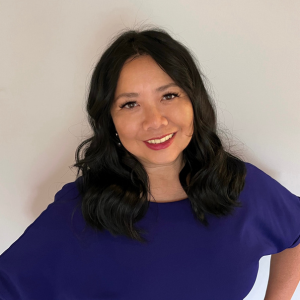Grassroots strategies for MDS success
Proficiency in Minimum Data Set (MDS) completion is critical in long-term care. Skill and accuracy in completing the MDS is gaining even more importance in New York State, where the Patient Review Instrument (PRI) system for Medicaid reimbursement in skilled nursing facilities is being phased out in favor of MDS-driven reimbursement. It has become imperative that New York facilities prepare for this significant change slated for 2009. Indeed, all skilled nursing facilities nationwide will benefit from the optimization of their MDS coding skills. Here are some of the lessons we are learning in the process.
As many clinicians know, the MDS has implications not only for reimbursement, but it also drives the data captured in Quality Measure (QM) and Quality Indicator (QI) reports. These QMs/QIs can and are viewed by the public when family members are looking for a facility for their loved ones. Department of Health surveyors use these same data in preparation for annual state inspections. It is therefore of paramount importance that we capture accurate “pictures” of our residents when coding the MDS.
In many facilities, the MDS is completed by different members of the interdisciplinary clinical team, including nurses, social workers, therapeutic recreations workers, dietitians, and physical, occupational, and speech therapists. Therefore, each team member has a unique and important role in the precise and inclusive completion of the MDS. We seek to optimize that role for each.
The Comprehensive Care Planning Facilitator
At Isabella Geriatric Center in New York City, one of our first innovative approaches involved building on our previously created Comprehensive Care Planning (CCP) Facilitator role. We have a large, 705-bed facility divided into 18 units. Each interdisciplinary unit-based team meets weekly to review the care plans with the residents and families scheduled for that week. A CCP Facilitator is assigned to a unit or units and is the team members’ mentor.
The role of the CCP Facilitator historically included general “organizational housekeeping” duties, such as making sure that the care planning meeting starts on time, all team members are present, and the signature sheet is completed and filed appropriately. Since November 2006, we have added a more challenging aspect to the role: Each CCP Facilitator now carefully audits the medical record before the care-planning meeting to ensure that the team’s coding in the MDS matches the documentation in the chart. Then the facilitator audits the care plan to ensure that what was coded by the team is carried through the Resident Assessment Protocol (RAP) process and brought to the care plan with thoughtful and person-centered goals and interventions. The CCP Facilitator is mandated to perform one such audit per unit per week.
We have designed a specific CCP Facilitator Audit Tool that we use two to three days before the care-planning meeting. This audit tool (see figure, “MDS/Care Plan Weekly Facilitator Audit Tool”) covers eight critical sections of the MDS and the RAP, as well as analysis of the team’s contribution to the care plan. The facilitator brings any issues with documentation, coding, or care plan completion to the attention of the individual team member before the care-planning meeting, either in a phone conversation or via e-mail. In this way, any enhancements in either coding or care planning can take place before the actual meeting, allowing the team to concentrate on communication with the resident and family during the meeting.
Data from the CCP Facilitator audits are collected, analyzed, and graphed; shared with the other CCP Facilitators and their teams; and reported to the Performance Improvement Committee. We find that this feedback loop is essential for continued growth and improvement.
The CCP Facilitators’ role has grown further over the past year to include explaining new regulatory information to their teams. The facilitators also help to problem-solve resident fall issues—especially for a frequent faller who may be challenging team members to respond appropriately—and are encouraged to have a working knowledge of QMs/QIs so that they can discuss reports/trends with units as needed.
Education
The second initiative is a unique educational effort. Our Information Technology department, along with our Staff Development department, has implemented a Computer-Based Learning Program. This tool allows us to custom-design learning modules in PowerPoint for staff use. Additionally, we can build associated competency tests for each module. The opportunity for teaching all staff has grown tremendously with this system.
Our Clinical Compliance department, which oversees MDS completion, is composed of the director of clinical compliance and five RNs/facility assessors. The department has created seven different computer-based MDS educational modules for the following staff members: therapeutic recreation worker, social worker, dietitian, physical and occupational therapists, speech-language pathologist, nurses for MDS/activities of daily living (ADLs), and certified nursing assistants (CNAs) for MDS/ADLs (the newest).
In each module, general MDS information is presented, with specifics pertaining to the specialized sections each discipline completes for the MDS. After viewing the entire educational module on the computer, the staff person will then take a competency test that assesses his or her information comprehension. Tests have a certain number of required questions and randomized questions so that each test is unique. A score of 80% is required to pass. These competency tests are administered on hire and annually thereafter for all clinical staff—yet another part of our effort toward ensuring that staff remain skilled and competent in MDS coding.
Activities of Daily Living
Our third exciting and cutting-edge effort for MDS success includes training the entire clinical team in MDS ADL language. ADL scores in Section G (Physical Functioning) of the MDS have an enormous effect on QMs/QIs, as well as on reimbursement. One striking example is the difference between coding “extensive” as opposed to “limited” for bed mobility or transfers. If a resident develops a pressure ulcer while requiring extensive assist for either of these activities, the resident will be classified in QM/QI 12.1: High Risk resident with pressure ulcer. If a resident requires only limited assist with either bed mobility or transfer activities and develops a pressure ulcer, the resident is categorized in QM/QI 12.2: Low Risk with pressure ulcer. One can see how critical coding accuracy can be!
We are embarking on a pilot effort that allows CNAs on each shift to enter ADL codes directly into our computerized system. The nurse/MDS coordinator then views the codes and, based on the CNAs’ entries, completes sections G1 and G2 of the MDS. This ambitious training program gives hands-on and classroom training to our CNAs in coding rules. Because of this, CNAs will now be mandated to participate in our Computer-Based Learning Program and take a competency test on MDS ADL coding before beginning to code.
In fact, in an effort to make sure that we support our CNAs and that all know how to “speak MDS,” all clinical team members (nurses, social workers, rehab therapists, dietitians, therapeutic recreation workers at all levels of staff) are learning the ADL language via Computer-Based Learning and must pass the associated competency test annually. In this way, at our care-planning meetings and in our documentation, we are all speaking and writing in the same language.
We are extremely excited and hopeful that these concurrent efforts will lead to enhanced MDS coding and result in person-centered, individualistic care plans and, finally and most importantly, lead to optimal care for our residents.
Yaffa Ungar is Director of Clinical Compliance at Isabella Geriatric Center in New York City.
For more information, phone (212) 342-9498 or visit https://www.isabella.org. To send your comments to the author and editors, e-mail ungar0907@nursinghomesmagazine.com.
I Advance Senior Care is the industry-leading source for practical, in-depth, business-building, and resident care information for owners, executives, administrators, and directors of nursing at assisted living communities, skilled nursing facilities, post-acute facilities, and continuing care retirement communities. The I Advance Senior Care editorial team and industry experts provide market analysis, strategic direction, policy commentary, clinical best-practices, business management, and technology breakthroughs.
I Advance Senior Care is part of the Institute for the Advancement of Senior Care and published by Plain-English Health Care.
Related Articles
Topics: Articles , MDS/RAI , Regulatory Compliance











